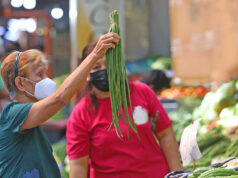Finance dep’t touts peso’s relative stability
By Karl Angelo N. Vidal
Reporter
THE PESO’s weakness may have been blamed for partly contributing to surging inflation last year, since this makes imported goods more expensive, but the local currency has lately fared better than a number of its Asian counterparts in terms of volatility, a senior official of the Finance department noted on Wednesday.
An economic bulletin attributed to Undersecretary Gil S. Beltran, the Finance department’s chief economist, showed the peso depreciating by 5.43% to the US dollar by end-2018 to P52.56, marking the fourth worst performance among 12 Asian currencies after India’s rupee (9.23%), Indonesia’s rupiah (6.16%) and China’s yuan (5.69%), and faring worse than a 3.03% average depreciation among the currencies covered.
The peso then improved at end- January, strengthening 0.73% from end-December to P52.17 against the dollar compared to a 0.79% average appreciation in the region. That compares to a P52-55-per-dollar exchange rate assumed by the government for budgeting purposes this year, compared to a P52.50-53 assumption for 2018.
“The Philippine peso is also among the least volatile…” the Finance department said in its bulletin, saying the local currency “continues to be one of the more stable Asian currencies despite uncertainties in the world market brought about by the normalization of Fed monetary policy, Brexit, volatile fuel prices and the US-China trade war.”
Data the department provided showed the peso in the middle of the pack in terms of volatility at end-2018, even as it was more stable than the regional average, and the third least volatile — together with South Korea’s won — at end-January behind Vietnam’s dong and the Hong Kong dollar.
In a mobile phone message, Mr. Beltran attributed the peso’s relative stability at end-January to “strong macroeconomic fundamentals”, citing “rapid growth with declining inflation, robust [foreign exchange] inflows and continued implementation of economic reforms.”
Inflation in January clocked in at 4.4%, marking the third straight month of deceleration from the nine-year-high 6.7% recorded in September and October, as food, transport and utility prices rose at a slower pace.
The Bangko Sentral ng Pilipinas expects inflation to return to below four percent by the end of this quarter, well within its 2-4% target band.
Mr. Beltran added that investor confidence buoyed by the government’s reforms such as the “Build Build Build” infrastructure push, “digressive” monetary policy adjustments made by the central bank and reduced restrictions on foreign investments among others, helped the peso remain relatively stable.
Sought for comment, Union Bank of the Philippines, Inc. Chief Economist Ruben Carlo O. Asuncion said via text message “two factors stand out to help the peso strengthen” in the months ahead, citing inflation’s continued easing “and election spending that will prop consumption up.”
At the same time, a continued legislative impasse on the proposed P3.757-trillion national budget for this year, simmering Sino-US trade tensions and any shift in the US Federal Reserve’s currently dovish stance could “bring a lot of volatility” to bear on the peso.




